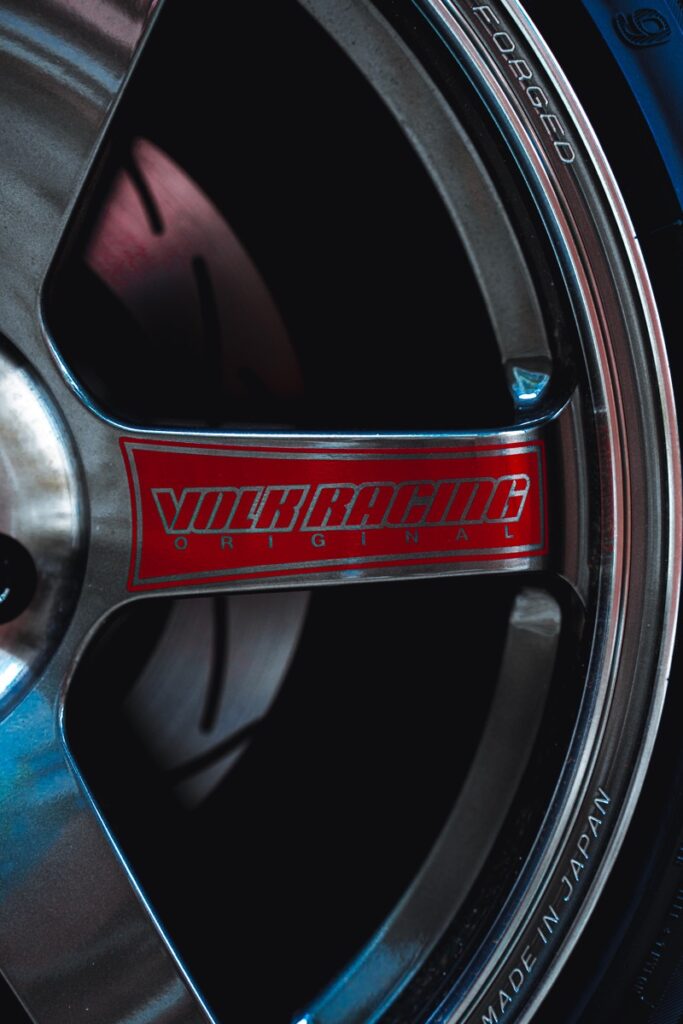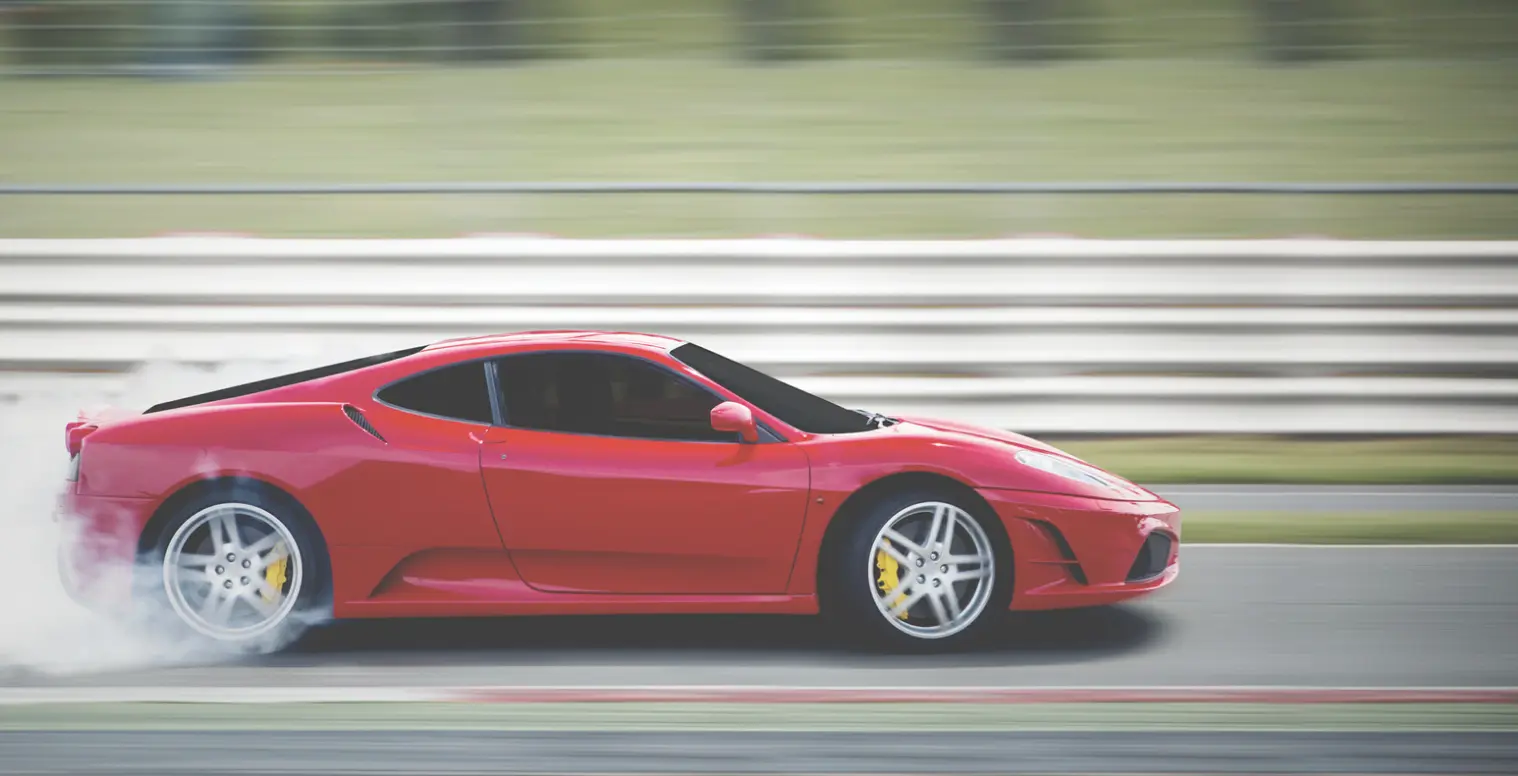In the world of top-end performance, every decision made about a specific car matters.
In the world of top-end performance, every decision made about a specific car matters. Particularly if the car is built for the purpose of racing, incremental adjustments that provide a performance edge can mean the difference between victory and defeat. That’s why supercars have ridiculously high price tags and the ones that are actually used for racing never drive a foot that they don’t have to.

But most of us don’t drive high-end racing cars. As much fun as it can be as enthusiasts to get the most performance out of our own vehicles(especially if that means we can fool around with them in the shop or treat ourselves with upgraded parts), how does performance come into play when we’re simply heading over to the grocery store or driving home for the holidays? The answer: quite a bit. Even if you don’t care at all about getting your car to accelerate quickly or reach a high top speed, performance still impacts just about every aspect of your driving experience. Here’s how performance is thought of in the case of high-end performance cars, and how those same factors like engine tuning, braking, and suspension apply to the experience of average drivers.

PERFORMANCE
For a high-speed performance car, the emphasis on engine performance and tuning is primarily to extract the maximum power and responsiveness from the engine. Such cars typically have engines with higher displacement or utilize forced induction methods such as turbocharging or supercharging to increase power output.
High-Speed Performance Car
For a high-speed performance car, the emphasis on engine performance and tuning is primarily to extract the maximum power and responsiveness from the engine. Such cars typically have engines with higher displacement or utilize forced induction methods such as turbocharging or supercharging to increase power output.
–Power and Torque:
In a performance car, tuning would be focused on maximizing horsepower and torque, ensuring that the car can attain high speeds and exhibit explosive acceleration. Every aspect of the engine, from the air intake to the exhaust, is tuned to optimize performance.
–High-RPM Performance:
These cars are often tuned to perform optimally at higher RPMs where maximum power is generated. Modifications and tuning practices might aim at ensuring that the engine breathes better and revs freely to higher RPMs.
–Cooling and Temperature:
Given that performance cars are likely to be driven aggressively, ensuring efficient cooling and optimal operating temperatures is crucial. Modifications might be made to enhance the cooling system and ensure that the engine performs consistently under high-stress conditions.
–Fuel and Ignition Systems:
The fuel and ignition systems of performance cars are finely tuned to ensure precise fuel-air mixtures and optimal ignition timing. This precise tuning allows for the generation of maximum power with controlled emissions.
Average Driver’s Car
For the average driver’s car, engine performance and tuning needs are more oriented towards reliability, fuel efficiency, and smooth operation over a wide range of typical driving conditions.
–Fuel Efficiency:
Tuning for everyday cars often focuses on improving fuel efficiency, ensuring that the car is economical to run for daily commutes and longer trips. Adjustments might be made to the engine’s control unit to optimize fuel consumption under various driving conditions.
–Low-End Torque:
Unlike performance cars, the tuning of everyday vehicles might aim at improving low-end torque. This ensures that the car is responsive and easy to drive during city driving, where low-speed driving and frequent stop-and-go situations are common.
–Reliability and Longevity:
Engine tuning also considers the long-term reliability and durability of the engine. Adjustments are made to ensure that the engine operates smoothly, reducing wear and tear and the likelihood of mechanical issues.
–Emission Control:
For average drivers, adhering to emission regulations and ensuring that the car operates cleanly is crucial. Tuning practices would thus involve ensuring that the engine’s emission systems, such as the EGR and catalytic converters, function efficiently.
Average Driver’s Car
While the performance needs of a high-speed car are centered around maximizing power, speed, and high-RPM performance, the needs of an average driver’s car lean towards fuel efficiency, reliability, and practical performance for everyday driving conditions. Tuning practices in each case would be aligned with these distinct objectives, ensuring that each car is optimized for its intended use and driving environment.

TRANSMISSION
The transmission of a car plays a pivotal role in determining the car’s overall performance and driving experience. Here’s a comparison of transmission considerations between a high-speed performance car and an average car used for daily commuting.
High-Speed Performance Car
In performance cars aimed at high-speed driving and racing, the transmission is a critical component that contributes to the car’s agility, responsiveness, and speed adaptation capabilities.
–Shift Speed:
Performance cars often employ transmissions that allow for very rapid gear changes. Automated manual transmissions (AMTs), dual-clutch transmissions (DCTs), and sequential transmissions are common in performance cars, facilitating quick shifts that enhance acceleration and performance.
–Gear Ratios:
The transmission in a high-speed car is likely to have gear ratios that optimize engine performance at high RPMs. This setup is more conducive to aggressive driving, providing better throttle response and acceleration at higher speeds.
–Manual Control:
Performance cars often offer drivers the ability to manually control gear shifts, even in automatic transmissions. This feature gives the driver more direct control over the car’s performance, allowing for a more engaged and responsive driving experience.
–Cooling:
High-speed driving can generate significant heat in the transmission. Performance cars often incorporate enhanced cooling systems for the transmission, ensuring consistent performance under high-stress driving conditions.
Average Driver’s Car
For an average car used primarily for commuting and everyday driving, the transmission is tuned more towards comfort, ease of use, and fuel efficiency.
–Smooth Shifting:
Transmissions in everyday cars are often designed to provide smooth and seamless gear changes. Automatic transmissions and continuously variable transmissions (CVTs) are common in these cars, prioritizing ease of driving and comfort over rapid shift speeds.
–Adaptability:
The transmission in an average car is usually more adaptable to various driving conditions, from stop-and-go traffic to highway cruising. It aims to offer a balance that ensures reasonable performance, fuel efficiency, and drivability in a wide range of scenarios.
–Fuel Efficiency:
The transmission plays a significant role in the car’s fuel consumption. In cars used for daily commuting, the transmission might be tuned to operate efficiently at low to mid-range RPMs, enhancing fuel economy.

SUSPENSION + HANDLING
High-Speed Performance Cars
For high-speed performance cars, the suspension and handling are meticulously tuned to maximize the car’s agility, responsiveness, and grip on the road, particularly at high speeds or when navigating tight corners.
–Stiffness and Rigidity:
Performance cars typically feature a stiffer suspension setup, reducing body roll during cornering and enhancing the car’s responsiveness. This leads to a more connected and sporty feel but might compromise comfort.
–Adjustability:
Performance-oriented suspensions might offer adjustability features, allowing for the customization of ride height, damping rates, and other parameters to suit different driving conditions or driver preferences.
–Lower Ride Height:
These cars often have a lower ride height to reduce the center of gravity, improving handling and stability at high speeds and during aggressive maneuvering.
–High-Performance Components:
Performance cars may utilize high-quality suspension components such as performance shocks, struts, and anti-roll bars, enhancing precision and control.
Average Driver’s Cars
In the context of everyday driving, the suspension and handling priorities lean more towards comfort, ease of driving, and adaptability to various road conditions.
–Comfort:
The suspension in everyday cars is typically tuned for a smoother, more comfortable ride. It’s more forgiving over bumps, potholes, and uneven road surfaces, prioritizing passenger comfort.
–Durability:
For daily commuting, the suspension should be durable and require minimal maintenance. It should withstand regular use over various road conditions without frequent adjustments or repairs.
–Higher Ride Height:
Average cars often have a slightly higher ride height, providing better visibility and ease of entry and exit. This setup is also more adaptable to different road conditions, including curbs and uneven surfaces.
–Simpler Adjustments:
The suspension systems in these cars tend to be simpler, with fewer adjustments required. This approach aligns with the needs of average drivers, who typically prefer a straightforward, hassle-free driving experience.

Braking systems are critical for vehicle safety and control. They are tailored differently based on the intended use and performance requirements of various vehicles. Let’s analyze the braking systems of high-speed performance cars against those of cars used by average drivers for regular commuting.
Braking System
High-Speed Performance Cars
For vehicles that are designed for high performance and speed, braking systems are vital components that are meticulously engineered to provide maximum stopping power, heat dissipation, and responsiveness.
–Brake Size and Type:
Performance cars often come equipped with larger brake rotors and calipers. They might also use performance-oriented materials like carbon-ceramic. Such brakes are more effective at dissipating the intense heat generated during aggressive driving, thus reducing brake fade.
–Brake Cooling:
In high-speed cars, enhanced cooling systems for the brakes are essential. Vents and ducts may be utilized to channel air to the brakes, helping to keep temperatures down during spirited driving sessions.
–Pedal Feel and Responsiveness:
Performance vehicles tend to have brake pedals that are highly responsive and provide significant feedback to the driver. This sensitivity allows for precise brake modulation, which is essential for controlling the car at high speeds and during dynamic driving.
–Electronic Assistance:
Performance cars might have advanced electronic braking aids like electronic brake-force distribution (EBD), brake assist, and performance-oriented anti-lock braking systems (ABS) that are tuned to complement the car’s dynamic characteristics.
Average Driver’s Cars
In the context of everyday commuting and practical usage, braking systems are configured primarily for reliability, ease of use, and longevity.
–Brake Durability:
Brakes in everyday cars are designed to be durable and low-maintenance. They should perform consistently under typical driving conditions and have a reasonable lifespan.
–Modulation and Ease of Use:
The brakes in these vehicles are often tuned to be progressive and easy to modulate. This approach ensures that the braking feels intuitive and secure for everyday driving, without any abruptness or excessive sensitivity.
–Noise and Comfort:
For the average driver, brakes that operate quietly and smoothly are desirable. Therefore, considerations such as reducing brake noise and vibration are prioritized.
–Standard Safety Features:
Everyday cars come equipped with essential safety features like ABS and electronic stability control (ESC), ensuring that the car remains stable and controllable during emergency braking scenarios.

Other Factors To Consider



Aerodynamics
Weight
Reduction
Tires &
Wheels
High Performance Needs: Aerodynamics plays a crucial role in a car’s top speed and acceleration. Reducing air resistance (drag) and managing airflow around the car can significantly impact performance. Aerodynamic components such as spoilers, diffusers, and air dams can be used to manage airflow and reduce drag.
High Performance Needs: Reducing the car’s weight improves acceleration and top speed, as well as handling and braking. Lightweight materials such as carbon fiber and aluminum can be used in the car’s construction to reduce weight without compromising strength.
High Performance Needs: High-performance tires are essential for transferring the engine’s power to the road. Tires must provide excellent grip and be able to withstand high speeds and temperatures. The wheels should be lightweight and strong to support the tires and withstand the forces encountered at high speeds.
Your Needs: A car with better aerodynamics tends to have improved fuel efficiency and stability at higher speeds. For everyday drivers, this means a quieter ride with less wind noise and better highway fuel economy. Adjustments like roof racks or spoilers can subtly influence a car’s aerodynamics.
Your Needs: A lighter car is generally more fuel-efficient and responsive. For daily drivers, this could mean better handling and braking, as well as improvements in fuel economy. However, extensive weight reduction might compromise comfort and noise insulation.
Your Needs: Investing in quality tires can have a significant impact. Good tires improve grip, handling, and braking, enhancing safety and confidence in various driving conditions. Upgraded wheels can also improve handling and responsiveness but consider comfort and ride quality.



COOLING
SYSTEMS
FUEL
EFFICIENCY
ELECTRONIC SYSTEMS
High Performance Needs: At high speeds, engines, brakes, and other components generate significant heat. Efficient cooling systems are necessary to manage these temperatures, preventing overheating and ensuring that the car’s components operate efficiently.
High Performance Needs: While not always a primary concern in high-speed performance, fuel efficiency can still be a consideration, especially in endurance racing. An efficient engine will make better use of fuel, which can be a performance advantage in certain situations.
High Performance Needs: Modern cars often feature electronic systems such as traction control, electronic stability control, and launch control, which can be optimized to improve performance, manage wheel spin, and enhance overall driving dynamics.
Your Needs: Ensuring that the car’s cooling systems are operating efficiently is crucial for engine longevity and performance. For everyday driving, this means less risk of overheating and better overall reliability.
Your Needs: Ensuring that the car’s cooling systems are operating efficiently is crucial for engine longevity and performance. For everyday driving, this means less risk of overheating and better overall reliability.
Your Needs: Upgrading or calibrating electronic systems like traction and stability control can improve the car’s safety and handling characteristics, offering a more confident and secure driving experience.

OPTIMIZING PERFORMANCE
Each of these areas must be carefully engineered and optimized to create a car that performs at the peak of its potential in terms of speed and overall performance.
While performance upgrades often aim at enhancing speed and agility, they also offer practical benefits for everyday driving, such as improved comfort, safety, and efficiency. However, any modification should be carefully considered and professionally installed to ensure that it enhances rather than detracts from the driving experience.





